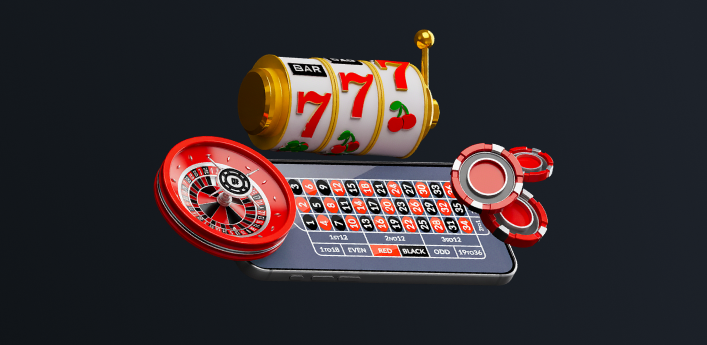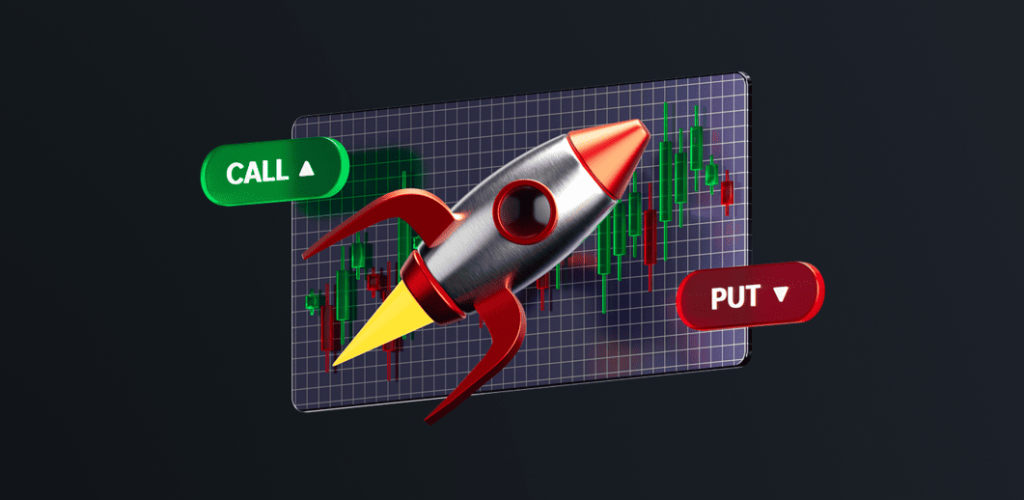
As Melhores Estratégias de Negociação de Futuros para 2026
Conteúdo
À medida que entramos em 2026, o cenário de negociação de futuros está evoluindo rapidamente, impulsionado por análises baseadas em IA, commodities tokenizadas, mudanças nas condições econômicas e incertezas geopolíticas. Para se manter à frente das flutuações do mercado em 2026, os traders de futuros estão utilizando modelos de aprendizado de máquina, previsões de volatilidade em tempo real e infraestruturas de negociação descentralizadas cada vez mais.
Com a maior volatilidade do mercado e o comércio algorítmico desempenhando um papel maior, os traders devem aprimorar suas estratégias para se manter à frente. As melhores estratégias de negociação de futuros em 2026 serão aquelas que se adaptam às condições de mercado em mudança, aproveitam insights baseados em dados e gerenciam riscos de forma eficaz.
Neste guia, exploraremos as principais estratégias de negociação de futuros para 2026, desde a adaptação ao seguimento de tendências até a análise quantitativa do fluxo de ordens. Seja você um trader experiente ou esteja apenas começando, essas estratégias podem ajudá-lo a otimizar suas negociações, navegar pelas flutuações do mercado e maximizar os lucros.
Lista de Estratégias de Negociação de Futuros
- Seguimento de Tendência Adaptativa
- Estratégia de Negociação de Spread
- A Estratégia de Retração
- Estratégia de Trading Breakout
- Negociação de Notícias com Precisão
- Colheita de Volatilidade
- Análise Quantitativa do Fluxo de Pedidos
Seguindo Tendências Adaptativas
Baseando-se em métodos tradicionais de seguimento de tendências, filtros de volatilidade baseados em IA e médias móveis que se recalculam automaticamente em resposta a mudanças no regime de mercado estão sendo integrados em sistemas adaptativos. Atualmente, muitos traders utilizam análise de sentimento quantitativa e algoritmos de aprendizado por reforço para refinar sinais de tendência e prevenir perdas por oscilações.
Ao utilizar indicadores dinâmicos e ajustar parâmetros em tempo real, os traders podem capturar melhor as tendências emergentes e mitigar os riscos associados a reviravoltas repentinas do mercado. Essa abordagem é particularmente relevante em 2026, pois espera-se que os mercados experimentem mudanças rápidas devido a interrupções tecnológicas e tensões geopolíticas.
Uma grande vantagem de seguir tendências é que isso alivia a pressão emocional de tentar consistentemente cronometrar perfeitamente as entradas e saídas do mercado, utilizando um sistema baseado em regras que se ajusta à medida que o mercado muda ao longo do tempo. Durante uma fase de mercado em alta, os traders podem optar por aumentar o tamanho de suas posições; no entanto, durante fases de baixa, eles podem reduzir posições ou mudar para oportunidades de venda a descoberto.
Estratégia de Trading de Spread
Para lucrar com a diferença de preço entre dois contratos futuros vinculados, uma estratégia conhecida como negociação de pares ou negociação de spread é empregada. Até 2026, os traders poderão aproveitar as ineficiências de preços em mercados tanto on-chain quanto off-chain graças ao arbitragem entre ativos de commodities tokenizadas e contratos futuros convencionais.
Você também pode gostar

Os contratos futuros atrelados a ativos correlacionados, como commodities ou índices, podem apresentar movimentos de preço variados ao longo do tempo, tornando este método particularmente benéfico nesses mercados.
A negociação de spreads de calendário envolve a compra e venda simultânea de contratos futuros do mesmo ativo subjacente, mas com datas de entrega diferentes. Essa estratégia permite que os traders lucrem com as mudanças no spread entre os dois contratos, gerenciando efetivamente os riscos associados às flutuações de preços baseadas no tempo. Por exemplo, um trader pode assumir uma posição longa em um contrato futuro de petróleo bruto que vence em junho, enquanto vende a descoberto um contrato que vence em dezembro, visando se beneficiar das mudanças antecipadas nas dinâmicas de oferta e demanda ao longo do período.
A Estratégia de Pullback
A abordagem de pullback visa capitalizar sobre mudanças de curto prazo dentro de uma tendência, aguardando que o mercado recuase para um nível de suporte ou resistência antes de entrar em uma negociação alinhada com a direção da tendência prevalente. Essa tática exige paciência e um timing preciso para diferenciar entre um pullback e uma potencial mudança na direção da tendência.
Essa abordagem ainda é bem-sucedida em 2026 em mercados que exibem volatilidade algorítmica, retrações rápidas provocadas por fluxos de ordens gerados por IA e eventos frequentes de reequilíbrio. As oportunidades de negociação podem ser aproveitadas a melhores preços e o potencial de lucro maximizado quando as tendências se reiniciam, se os traders pesquisarem os movimentos do mercado e utilizarem ferramentas como níveis de retração de Fibonacci, indicadores de negociação como o Índice de Força Relativa (RSI) ou médias móveis.
Para aumentar a precisão do tempo de recuo, os traders contemporâneos também estão utilizando modelos de retrocesso baseados em aprendizado profundo que examinam o fluxo de pedidos passado.
Estratégia de Trading Breakout
A negociação de breakout se destaca como uma estratégia favorita no comércio de futuros devido à sua capacidade de aproveitar as mudanças de preço que ocorrem quando um mercado se move além de um intervalo, efetivamente rompendo-o. Um breakout acontece quando o preço ultrapassa um nível de suporte ou resistência e geralmente vem acompanhado de um alto volume de negociação, o que indica a probabilidade de um movimento significativo em uma direção.
A negociação de rompimento se concentra em identificar níveis chave de suporte e resistência e executar negociações quando os preços ultrapassam esses limites. Em 2026, com os mercados potencialmente influenciados por mudanças tecnológicas rápidas e eventos globais, a negociação de rompimento pode ajudar os traders a capitalizar movimentos de preços significativos. Por exemplo, se um índice de ações consistentemente enfrenta resistência em um determinado nível, um rompimento acima desse ponto, acompanhado por um aumento no volume, pode sinalizar uma forte tendência de alta.
Em 2026, os traders também podem encontrar possíveis zonas de rompimento horas ou até dias antes do tempo com a ajuda de modelos de compressão de volatilidade e scanners de rompimento alimentados por IA.
Negociação de Notícias com Precisão
Usando modelagem de impacto de eventos em tempo real e análises de notícias curadas por IA para definir os mercados de 2026, o comércio de notícias de precisão se tornou cada vez mais vital. Essa estratégia envolve fazer negociações com base em reações imediatas a divulgações econômicas, anúncios corporativos ou eventos geopolíticos. Utilizando algoritmos avançados e feeds de dados em tempo real, os traders podem responder rapidamente às notícias, posicionando-se de maneira vantajosa à frente dos movimentos mais amplos do mercado. Por exemplo, mudanças inesperadas nas taxas de juros ou figuras de emprego podem levar a ajustes rápidos nos preços de contratos futuros relacionados.
Em 2026, a interpretação dos traders sobre os lançamentos de dados macroeconômicos está sendo revolucionada por ferramentas de processamento de linguagem natural (NLP), que permitem reações mais rápidas e precisas a choques de notícias.
No mundo acelerado de hoje, onde os dados e as respostas rápidas do mercado são fundamentais, o trading de notícias sofisticado está ganhando importância. Essa abordagem envolve realizar operações em resposta a ocorrências econômicas, divulgações corporativas e acontecimentos globais que podem levar a mudanças substanciais nos preços do mercado futuro.
Os traders devem ficar de olho nos calendários financeiros e em divulgações de dados importantes, como decisões sobre taxas de juros, relatórios de emprego e atualizações de inflação, que podem levar a mudanças de preço súbitas. Os traders de notícias devem estar prontos para executar negociações frequentemente, usando algoritmos ou software específico para responder às notícias imediatamente após sua divulgação. Uma gestão de risco eficaz é crucial no trading de notícias, já que os mercados podem passar por uma volatilidade significativa durante e após anúncios importantes.
O posicionamento sub-segundo durante eventos de notícias significativas agora é possível ao combinar pontuações de sentimento de IA com sistemas de execução de pedidos automatizados, o que será uma vantagem crucial na negociação de futuros em 2026.
Colheita de Volatilidade
A ideia central por trás da abordagem de colheita de volatilidade é lucrar com as oscilações de preços do mercado, independentemente da direção. Mercados que são muito voláteis, onde os preços se movem muito em qualquer direção, oferecem oportunidades para negociações longas e curtas. A estratégia envolve a execução de negociações para compra e venda de contratos futuros durante períodos de volatilidade aumentada, sem manter um ponto de vista ou posição forte sobre a direção do mercado, basicamente permanecendo neutro.
A colheita de volatilidade tem como objetivo explorar as oscilações dos preços de mercado, independentemente da direção. No contexto das flutuações de mercado antecipadas para 2026, essa estratégia envolve a execução de operações longas e curtas durante períodos de volatilidade aumentada, sem um forte viés em relação à direção do mercado. Ferramentas como o Índice de Volatilidade (VIX) podem ajudar os traders a identificar pontos de entrada e saída ideais, permitindo que eles lucrem com a incerteza inerente aos mercados.
Com várias janelas de micro-volatilidade por sessão, a colheita de volatilidade está se tornando cada vez mais popular em 2026 devido a ciclos de inflação persistentes, realocação impulsionada por IA e fragmentação do mercado de derivativos.
Análise Quantitativa do Fluxo de Ordens
Até 2026, camadas de previsão de aprendizado de máquina que analisam desequilíbrios de liquidez em milissegundos tornaram-se intricadamente entrelaçadas com a análise de fluxo de ordens. Nos mercados futuros, onde grandes traders institucionais podem afetar a dinâmica do mercado com suas ordens significativas, a abordagem de análise de fluxo de ordens quantitativa depende criticamente da análise de ordens de compra e venda no mercado para antecipar mudanças de preço. Os traders conseguem obter insights sobre o estado do mercado e antecipar movimentos futuros de preços ao monitorar dados de fluxo de ordens, que incluem profundidade de mercado e volumes de transação. Isso permite que os traders antecipem movimentos futuros de preços antes que sejam refletidos no mercado mais amplo.
À medida que as ferramentas de negociação de frequência e análises avançadas se tornam mais acessíveis no âmbito da negociação de futuros, a análise quantitativa do fluxo de ordens está prestes a se tornar um elemento crucial. Os traders que puderem interpretar esses dados com habilidade terão a capacidade de prever mudanças no momento do mercado e ajustar suas posições de acordo. É possível que essa estratégia tenha um impacto ainda maior quando combinada com outras táticas, como a negociação de tendência ou a negociação de rompimento.
Teste Retroativo da Sua Estratégia de Futuros
Os traders de futuros devem verificar a praticidade de sua abordagem antes de arriscar dinheiro real, testando os dados contra um plano de negociação. Uma explicação simples de backtesting é aplicar um plano de negociação selecionado a dados de mercado passados para avaliar seu desempenho ao longo do tempo. Este método permite que os traders avaliem a lucratividade de suas estratégias, identifiquem quaisquer deficiências e façam melhorias para resultados otimizados.
Em 2026, os traders terão a capacidade de simular milhares de cenários de mercado em questão de segundos, graças a plataformas baseadas em nuvem e ferramentas de backtesting aprimoradas por IA, que fornecerão intervalos de confiança mais confiáveis.
Os traders devem ter fontes de dados históricos geralmente disponíveis através de plataformas de negociação ou prestadores de serviços externos se quiserem testar adequadamente uma estratégia de negociação de futuros a partir de um período passado. O primeiro passo para iniciar esse processo é inserir as regras da estratégia em um programa de backtesting. Se você estiver tentando uma estratégia de acompanhamento de tendência, por exemplo, pode especificar critérios como médias móveis ou indicadores de volatilidade para guiar os locais de entrada e saída. O sistema então simula como a estratégia teria se saído em vários períodos de tempo com base em dados históricos e produz análises como razões de vitórias para derrotas, lucros e perdas.
É importante lembrar que o desempenho passado nem sempre é indicativo de resultados futuros, pois as circunstâncias no mercado podem mudar e fatores como flutuações do mercado e tendências econômicas podem impactar a eficácia de uma estratégia no futuro. Ao testar sua abordagem em relação a dados passados, é prudente evitar torná-la excessivamente ajustada ou perfeitamente otimizada para se adequar às tendências anteriores, pois isso pode levar a expectativas irreais. O objetivo é descobrir uma estratégia que funcione consistentemente bem em geral em todos os cenários de mercado, em vez de apenas em determinados períodos de tempo.
Desenvolvendo um Plano de Negociação de Futuros
Para ter sucesso no caótico campo dos mercados de negociação de futuros, você deve criar uma estratégia abrangente, incluindo seus objetivos e tolerância ao risco, juntamente com suas estratégias de negociação e técnicas para gerenciamento responsável e eficiente de transações em muitas circunstâncias de mercado. Uma estratégia de negociação sólida em 2026 também incorpora calendários de macro-eventos sincronizados com sinais algorítmicos (já que ferramentas de negociação algorítmica automatizam cada vez mais as decisões de fluxo de ordens), sistemas de pontuação de risco baseados em IA e ajuste automático do tamanho das posições.
Comece declarando seus objetivos financeiros. Você pretende investir em futuros com o propósito de construir riqueza a longo prazo? Você está mais interessado em buscar lucros especulativos de curto prazo? Seus objetivos impactarão diretamente as estratégias que você escolher seguir e o nível de risco com o qual você se sente confortável em assumir.
Você não deve antecipar ganhar muito em cada ação ou negociação de investimento; portanto, é essencial definir metas razoáveis para seus ganhos potenciais. Sua tolerância ao risco é fundamental aqui. Isso significa descobrir quanto do seu portfólio de investimentos você está confortável em arriscar em cada negociação e sua exposição geral ao risco. De modo geral, tente não expor muito do seu dinheiro ao risco; nada acima de 1 a 2 por cento do seu capital em qualquer negociação pode ajudá-lo a gerenciar sequências de perdas sem esvaziar totalmente sua conta.
Sua estratégia de negociação também deve detalhar as abordagens e estratégias que você planeja empregar, como seguir tendências ou negociar rompimentos ou spreads. Declare claramente os parâmetros para entrar e sair de negociações, bem como diretrizes para ajustar suas táticas em resposta a mudanças no mercado, como passar de negociações ativas em mercados em alta para uma abordagem mais cautelosa em circunstâncias voláteis ou incertas.
Certifique-se de incluir sua rotina de negociação em seu plano. Isso incluiria coisas como acompanhar as últimas notícias do mercado e estudar gráficos enquanto reflete sobre suas negociações passadas para aprender lições, tanto das vitórias quanto das derrotas. Esse método estruturado ajuda a garantir que suas negociações correspondam aos seus objetivos e padrões de gestão de risco. Hoje em dia, muitos traders profissionais também incorporam filtros de sustentabilidade (futuros vinculados a ESG), governança de dados e ética em IA em sua estrutura de negociação.
Gerenciando Riscos em Futuros
Negociar em mercados de futuros requer um alto nível de gerenciamento de risco para proteger seu investimento e garantir retornos sustentáveis ao longo do tempo. Mesmo pequenas mudanças de preço podem ter um impacto significativo em seus lucros ou perdas devido aos índices de alavancagem.
Ordens de stop loss são uma ferramenta de gerenciamento de risco na negociação de futuros. Elas fazem com que um contrato seja fechado automaticamente se o mercado se mover contra você por uma certa porcentagem, limitando suas perdas potenciais. No caso de compra de futuros de petróleo bruto, ao definir um stop loss cinco por cento abaixo do seu ponto de entrada, a negociação seria encerrada caso o mercado atinja esse nível. Essa estratégia ajuda você a evitar continuar seguindo negociações perdedoras por um período muito longo. Para minimizar perdas significativas em mercados imprevisíveis, os traders de futuros devem determinar o tamanho apropriado da posição, avaliando o tamanho de cada posição em relação ao seu saldo total e nível de tolerância ao risco.
Gerenciar riscos de forma eficaz implica a diversificação de investimentos entre ativos, em vez de se concentrar em um único ativo ou classe de ativos em atividades de negociação, como espalhar a exposição entre vários contratos futuros. Para interromper perdas em cascata, os traders estão utilizando preditores de drawdown baseados em aprendizado de máquina e mapas de calor de correlação em tempo real cada vez mais. Isso permite que os traders reduzam o impacto de desenvolvimentos negativos do mercado em qualquer setor específico e se protejam contra eventos imprevistos.
Além do que foi dito acima, a gestão de riscos também envolve ter uma compreensão das situações de mercado. Manter-se atualizado com mudanças econômicas e eventos como alterações nas taxas de juros ou na política global ajuda a ajustar suas estratégias de risco conforme necessário. Durante períodos em que o mercado está altamente instável, você pode optar por diminuir o tamanho de suas operações ou se afastar temporariamente até que as coisas se acalmem.
Ao integrar essas técnicas de gestão de risco em sua abordagem de negociação, você pode proteger seus investimentos de forma eficaz e minimizar perdas potenciais, enquanto aumenta seus resultados gerais na negociação de futuros.
Conclusão
O ambiente de negociação de futuros em 2026 exige adaptabilidade, tomada de decisões informadas e gerenciamento de riscos robusto, combinado com precisão quantitativa e adaptabilidade da IA. Ao integrar essas estratégias atualizadas, os traders podem se posicionar para navegar efetivamente nas complexidades do cenário de mercado moderno, aproveitando oportunidades enquanto mitigam riscos potenciais.
FAQ
Although there isn't a single "best" strategy, the most successful strategies in 2026 combine quantitative order flow analysis, adaptive trend following, and AI-driven volatility models. More consistent performance is typically attained by traders who incorporate flexible risk controls and real-time data.
These days, artificial intelligence powers everything from sentiment analysis and volatility forecasting to trend identification and execution timing. The majority of traders respond to market changes more quickly and precisely than they could with manual techniques by utilizing automated risk systems, machine learning tools, and news analysis driven by natural language processing.
Yes, if done properly. Although backtesting is still crucial, traders should test their strategies in a variety of market regimes to prevent overfitting. In 2026, cloud-based backtesting platforms and AI-enhanced scenario simulations contribute to the creation of more realistic performance expectations.
Overleveraging, abrupt volatility spikes, and AI-driven liquidity imbalances are the main risks. Stop-loss systems, dynamic position sizing, and real-time risk analytics are tools that traders use to reduce these risks and modify exposure in volatile market conditions.
Atualizado:
7 de novembro de 2025




